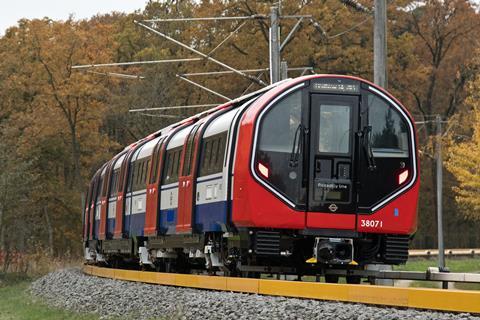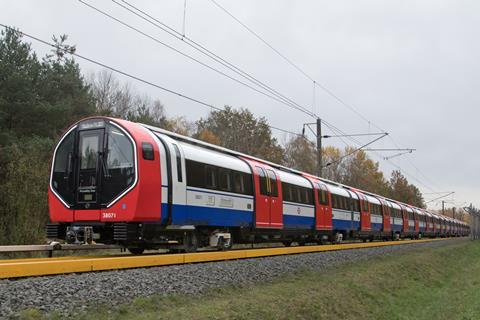
UK: The first of 94 trainsets that Siemens Mobility is to supply for London’s Piccadilly Line is now undergoing intensive dynamic testing at the Wegberg-Wildenrath Test & Validation Centre in Germany.
Scheduled to take six or seven months, the programme includes testing of acceleration and braking, noise and vibration, looking at all onboard equipment including both hardware and software. Siemens Mobility will also undertake functional tests of interfaces with infrastructure and other equipment.
The first trainset is expected to arrive in London in summer 2024, ahead of further testing on the Piccadilly Line before the new trains start entering service in 2025.
Meanwhile, three cars have been tested in a climate chamber which can provide ambient temperatures from -15°C to 40°C, a solar load of 600 N/m2, ice and wind speeds of up to 100 km/h. Sensors were used to understand what passengers would experience, measuring humidity and temperature.
Wien and Goole
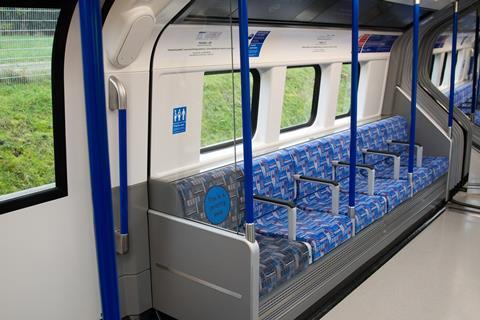
The Piccadilly Line fleet replacement contract which Transport for London awarded to Siemens Mobility in November 2018 is valued at around £1·48bn plus VAT.
TfL has options to order further trains for use on the Bakerloo, Central and Waterloo & City lines, subject to funding being secured.
Around half of the 94 trainsets for the Piccadilly Line will be delivered from Siemens Mobility’s factory at Wien in Austria. The rest are to be produced at its new UK factory in Goole, where manufacturing is set to start in 2024. This represents an investment of almost £200m to develop a ‘rail village’ which is expected to create up to 700 skilled jobs and up to 1 700 jobs in the supply chain; some components will also come from local suppliers, including LED interior lights from LPA Lighting Systems.
Inspiro London

The custom-designed trains form part of Siemens Mobility’s lnspiro family and are expected to be in service for at least 25 years.
They will be the first trains on London Underground’s small-profile deep-level ‘tube’ lines to offer walk-though interiors and air-conditioning, features which are already found on the Bombardier Transportation trainsets used on the larger-profile Sub-Surface Lines which offer more space.
Siemens Mobility has made full use of the Piccadilly Line’s very restricted loading gauge to provide a nominal capacity of 1 042 passengers - about 10% more than the 1973 stock that the trains will replace.
All equipment is mounted beneath the vehicles, rather than in the roof, to maximise available headroom. The increased width of the vehicles will require tightly-curved platforms to be ‘shaved’; at some stations this will increase the stepping distance to the current 1973 stock trains and passengers may need to be reminded to ‘mind the gap’ until the old trains are withdrawn.
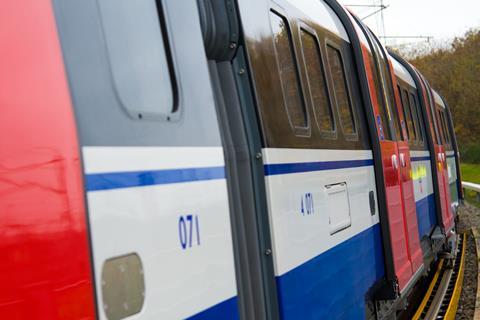
Door systems are being supplied by Knorr-Bremse subsidiary IFE. The 1973 trains have 1 370 mm wide double doors and 680 mm single doors at the car ends, while the new trains feature wider doors at 1 690 mm to speed passenger flow. It is envisaged that the shorter dwell times could enable an additional three trains an hour to run at peak times.
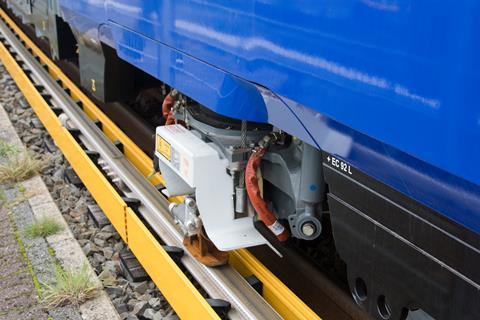
The new trains are lighter than the existing ones, making them more energy efficient as well as providing a smoother ride. The nine-car articulated trainsets ride on 10 bogies, which are offset from the articulations to facilitate the walk-through design; alternate cars are slightly shorter and have no bogies, being suspended from the adjacent vehicles.
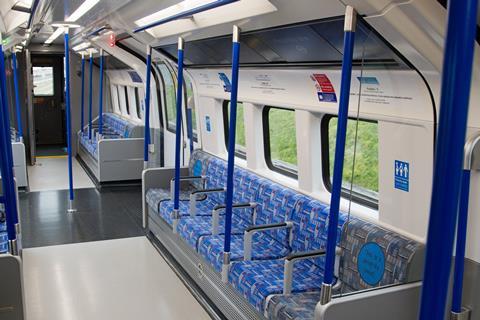
The trains will also feature a specially designed seat moquette named after architect Charles Holden with the pattern referencing his London Underground station designs from the 1920s and 1930s.
The availability of government funding to replace the life-expired signalling on the Piccadilly Line remains uncertain but would increase capacity from 27 to 36 trains per hour. Should funding become available, TfL has an option for Siemens Mobility to supply a further 18 Piccadilly Line trains to operate the enhanced service.
| Inspiro London technical data | |
|
Train configuration |
nine cars |
|
Length over couplings |
113·7 m |
|
Width over passenger doors |
2 648 mm |
|
Height above top of rail |
2 844 mm |
|
Entrance height above top of rail |
700 mm |
|
Capacity per train (5 passengers/m2) |
1 076 (including 268 seated) |
|
Door width |
1 690 mm |
|
Maximum traction power |
2 500 kW |
|
Maximum operating speed |
100 km/h |
